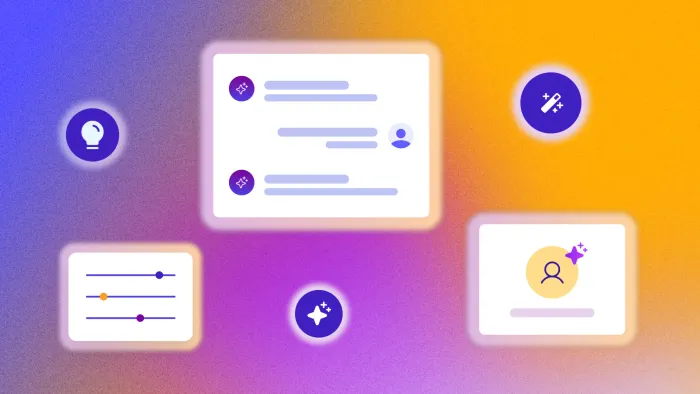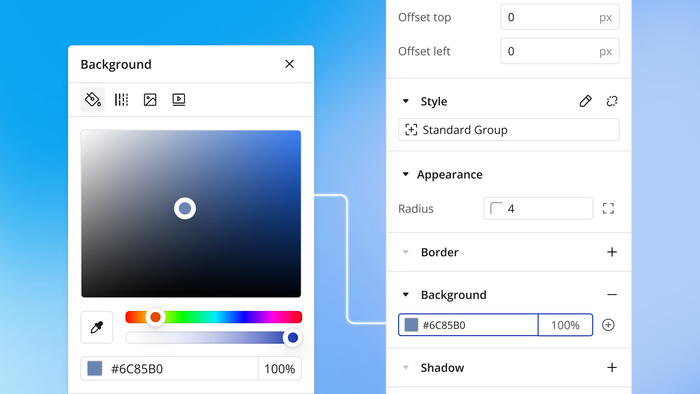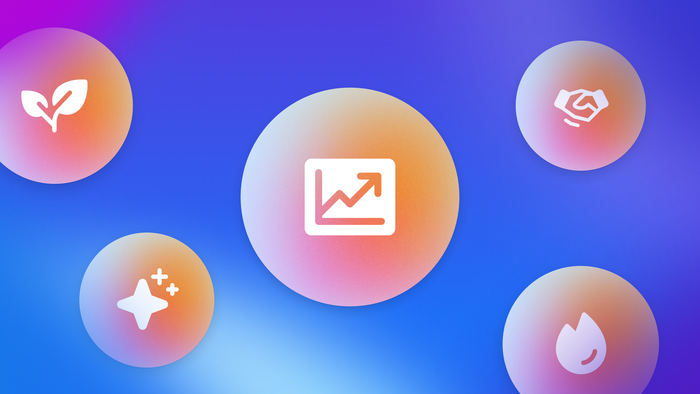As generative AI becomes more embedded into our everyday lives and workflows, the growing mix of tools and terms can easily blur together. Among the most widely used and commonly confused are AI agents, chatbots, and virtual assistants. While these terms are sometimes used interchangeably, they refer to distinct types of AI tools, each with its own strengths and ideal use cases.
In this article, we’ll break down the differences between these forms of conversational or task-oriented AI, looking at how they work, what they’re good at, and when to choose one over the others. Whether you’re looking to streamline customer support, boost team productivity, or build sophisticated automation into your business, understanding these distinctions will help you select the right tool for the job.
Chatbots, virtual assistants, and AI agents defined
These three technologies differ in their complexity, capabilities, and how they interact with users. We’ll take a closer look at each of them.
Chatbots
Chatbots are rule-based systems designed to handle simple, repetitive tasks through scripted conversations.
They’re typically deployed on websites, apps, or messaging platforms to help with tasks like answering FAQs, directing users to resources, or processing basic service requests. Chatbots rely on predefined flows or decision trees, meaning they can only respond to inputs they’ve been specifically programmed to handle.
While some use basic natural language processing to make interactions feel conversational, their understanding of context is limited. Chatbots work best when the range of questions is narrow and the expected answers are clear. Because of their simplicity, they tend to be relatively cost effective and easy to set up, but they usually can’t adapt on the fly or handle more nuanced conversations.
Pros:
- Fast and efficient for simple tasks
- Easy to deploy and maintain
- 24/7 availability for high-volume interactions
- Ideal for rule-based, process-driven use cases
Cons:
- Limited adaptability and context retention
- Can feel robotic or frustrating in unexpected scenarios
- Don’t scale well to complex conversations
- Minimal personalization
Virtual assistants
Virtual assistants are AI-powered tools that help users complete tasks through natural, conversational interactions.
They tend to be more flexible than chatbots and are often better able to cater to individual users. While they still rely on user prompting, AI assistants are built with more advanced natural language processing, allowing them to better understand intent and personalize responses over time. They can respond to voice or text commands to help users with a range of tasks from answering questions to managing calendars, setting reminders, and controlling smart devices.
Virtual assistants are often embedded in devices like smartphones, speakers, or productivity platforms, like Apple’s Siri or Amazon’s Alexa. They’re designed to assist individual users by providing quick, convenient support for everyday needs.
Pros:
- Handles a wide variety of user-facing tasks
- Provides personalized and context-aware responses
- Can support voice and text input
- Used in both personal and professional settings
Cons:
- Relies on user-initiated prompts
- Limited to specific platforms or available integrations
- Requires more design and setup than a basic chatbot
- May struggle with complex workflows
AI agents
AI agents are autonomous systems that can make decisions and take action on their own to achieve specific goals.
Unlike chatbots and virtual assistants, AI agents don’t just respond to user prompts. They proactively interpret data and carry out objectives with minimal or no human input. Agents can reason through complex problems, adapt in real time based on newly acquired information, and coordinate across different systems. Built on large language models and often grounded in internal company data, they’re capable of advanced functions like planning, prioritizing, and orchestrating complex operations.
AI agents are beginning to see adoption in business settings, especially for automating workflows and decision making in structured environments. For example, Intuit has integrated AI agents into its QuickBooks platform to categorize expenses, generate financial summaries, and streamline bookkeeping tasks. However, some of the most advanced claims about their autonomy and reasoning remain aspirational rather than reflective of real-world performance. In practice, AI agents still tend to require close oversight, and they perform best within clearly defined parameters.
Pros:
- Autonomous and proactive
- Adapt dynamically to changing conditions
- Can handle complex, multi-step workflows
- Scale well to backend operations and specialized domains
Cons:
- More complex to develop and configure
- May require careful monitoring and safety mechanisms
- Less intuitive for direct user interaction
- Some theoretical capabilities remain aspirational
Chatbots, virtual assistants, and AI agents compared
To help clear things up, here’s a side-by-side comparison of chatbots, virtual assistants, and AI agents across a variety of dimensions.
| Chatbots | Virtual assistants | AI agents | |
|---|---|---|---|
| Primary role |
Answer questions or perform simple tasks based on predefined scripts. |
Help users complete a wide range of tasks through more natural interaction. |
Autonomously carry out complex objectives with minimal or no user input. |
| Level of autonomy |
Reactive. Only responds to user prompts. |
Mostly reactive. May offer suggestions based on user behavior. |
Proactive. Can set goals, plan, and take action without being asked. |
| Complexity of tasks |
Handles straightforward, rule-based interactions. |
Manages moderately complex, multi-step tasks like scheduling or summarizing. |
Executes advanced, dynamic workflows that require reasoning and adaptability. |
| Context awareness |
Low. Typically forgets past interactions. |
Moderate. Can retain some context within a session or over time. |
High. Builds on past data and adapts in real time for better decision making. |
| Learning ability |
Must be manually updated to handle new scenarios. |
Learns to improve user experience within a defined scope. |
Continuously learns from interactions and outcomes to improve performance. |
| Real-time data handling |
Handles static or on-demand data with limited context. |
Can fetch and respond to current data when prompted. |
Continuously tracks and adapts to live data streams. |
| User interaction |
Mostly text-based menus or scripts. |
Natural voice or text interactions that mimic human conversation. |
Often operates behind the scenes or via system-to-system interactions. |
| Example use cases |
Customer support FAQs, lead capture, and routing queries. |
Managing calendars, summarizing meetings, and assisting with research. |
Workflow orchestration, sales prioritization, and autonomous data analysis. |
Chatbots are the simplest of these tools, designed to handle straightforward interactions using predefined rules or scripted flows. Virtual assistants offer more natural interactions via voice or text, helping users manage tasks and providing personalized support based on prior behavior. AI agents operate autonomously, making decisions, adapting to changing contexts, and completing complex workflows without constant prompting.
In short: Chatbots follow scripts, assistants follow cues, and agents follow objectives.
How to choose the right AI tool for your needs
To find the right fit, think less about what these tools are and more about what you want them to do. Here are some practical questions to help you choose the right kind of AI for your goals, whether that’s creating a new mobile app with advanced functionality or building a simple internal tool to improve your team’s workflows:
What level of human-like interaction are you looking for?
If you want users to feel like they’re having a natural conversation, a virtual assistant powered by a large language model is your best bet. Chatbots offer basic interaction with limited, menu-driven responses. And AI agents typically operate behind the scenes rather than engaging in ongoing dialogue.
When you’re building on Bubble, you can connect to AI models like Anthropic and OpenAI to power a virtual assistant in your app.
How much complexity are you willing to manage during setup?
Chatbots are the easiest to build and maintain, often using rule-based logic or simple scripts. Virtual assistants take more effort to integrate with calendars, apps, or workflows, but offer a more useful day-to-day experience. AI agents require the most upfront planning and testing, since they often need to coordinate tools, data sources, and autonomous behavior across a variety of tasks.
Do you want the tool to act on its own or only respond to prompts?
AI agents are designed for autonomy. They can evaluate situations, plan the steps required to reach goals, and take action without waiting for a prompt. Virtual assistants are reactive but responsive. They wait for input but can offer personalized suggestions. Chatbots stick to scripts. They don’t take initiative, but they do offer consistent, predictable interactions.
Is personalization based on user preferences or history important?
Virtual assistants can adapt over time and tailor their responses to individual users. AI agents can also incorporate user context, but they’re more focused on task completion than personalization. Chatbots usually treat every interaction as a one-off with little or no memory of past behavior.
Will the AI need access to real-time data or external tools?
AI agents can connect to external systems, pull in fresh data, and trigger next steps automatically. Virtual assistants can also access external tools, but they usually need more specific user input to do so. Chatbots typically stick to internal scripts and data unless custom integrations are added.
How these AI tools are evolving and blending
While chatbots, virtual assistants, and AI agents started as distinct categories, the lines between them are rapidly blurring. Modern tools often borrow elements from each category, like a chatbot that remembers past conversations, a virtual assistant that suggests actions on its own, or an AI agent that interacts through natural language. As the underlying technology advances, these distinctions matter less in practice than they once did.
What really matters is what you need your tool to do. Are you trying to improve customer service? Automate internal workflows? Create a more personalized user experience? The right tool for you might look like a chatbot, feel like an assistant, or function like an agent. Or it might be a hybrid of all three.
With Bubble’s no-code AI app builder, you don’t need to limit yourself to one category or wait for the perfect off-the-shelf solution. You can build exactly the AI-powered experience your users need without writing a line of code.
Build your AI agent, assistant, or chatbot on Bubble
Whether your project calls for a simple chatbot, a personalized virtual assistant, an autonomous AI agent, or some combination of the three, you can build it on Bubble. With a visual editor, robust AI integrations, and full control over workflows and data, Bubble’s full-stack development platform lets you bring your ideas to life with no-code.
Build for as long as you want on the Free plan. Only upgrade when you're ready to launch.
Join Bubble






